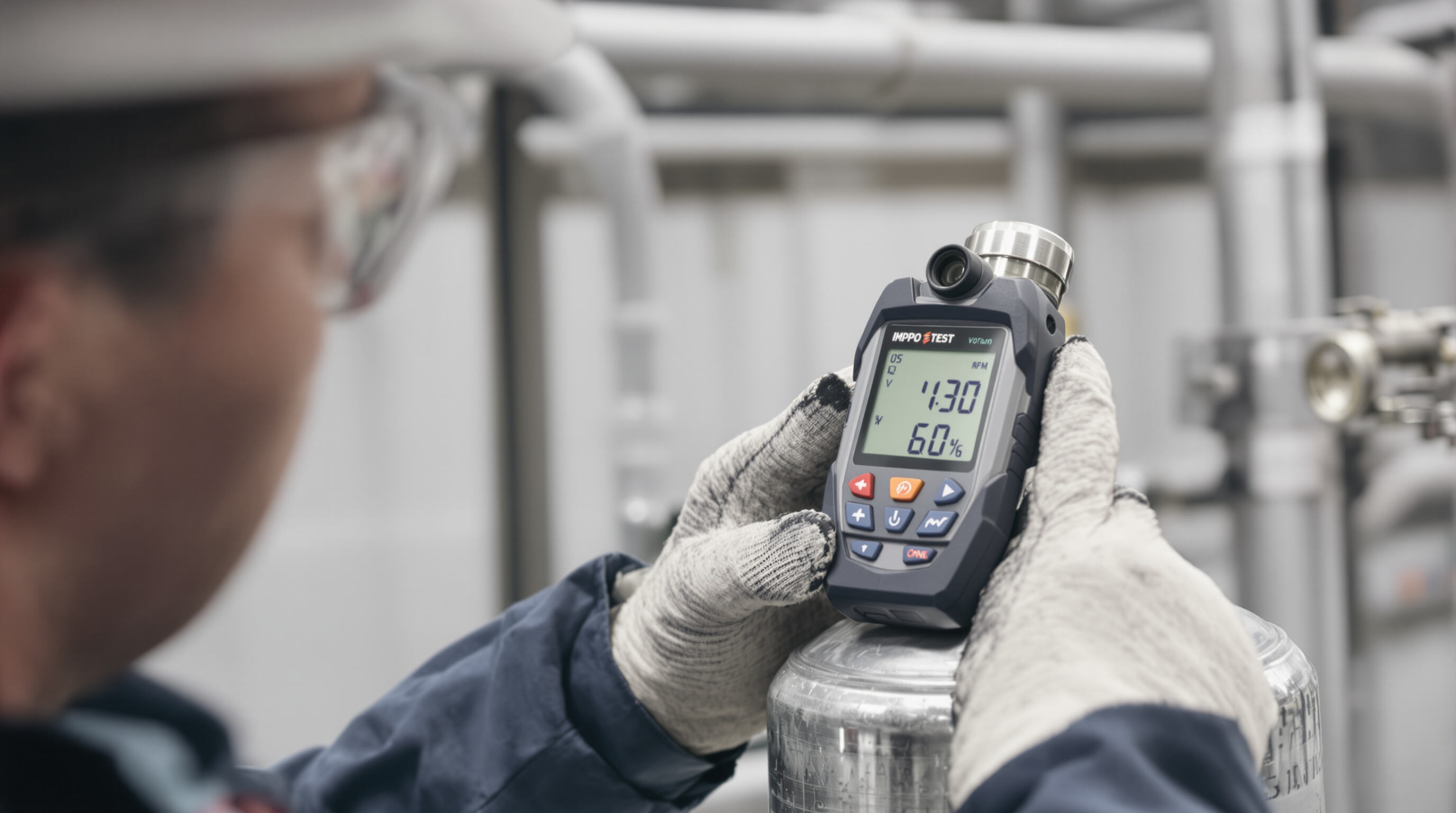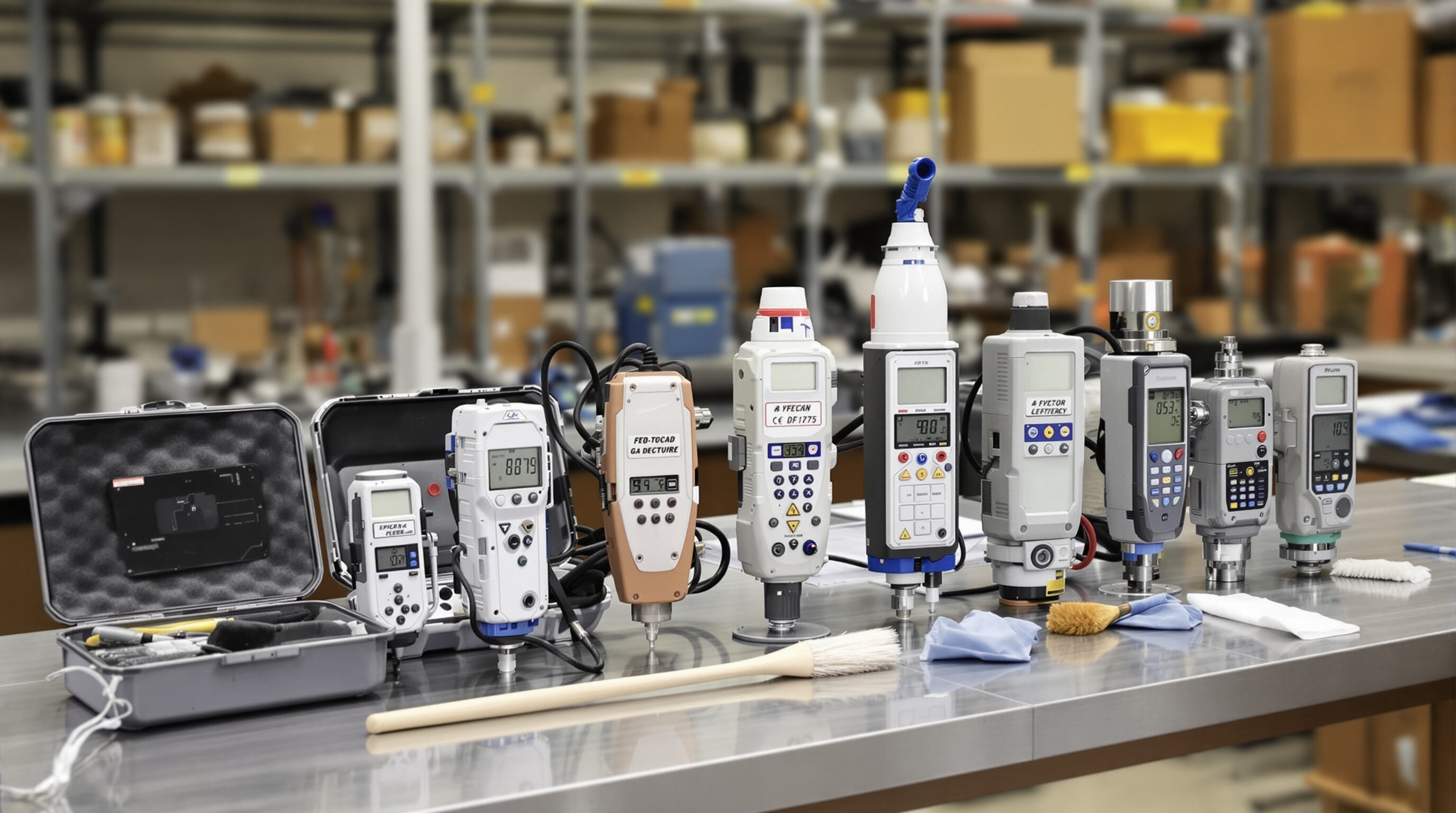Calibration: The Foundation of Gas Detector Accuracy
What Is Gas Detector Calibration and Why It Ensures Accuracy
Gas detectors need regular calibration to give accurate readings when they're exposed to test gases that have been properly certified for specific concentrations. The problem is that over time these sensors tend to drift because of all sorts of factors like dirt buildup, chemicals getting into them, or just plain old age. This drifting can really mess up safety protocols if not addressed. When we talk about keeping things calibrated, what we're actually doing is resetting how the sensor responds so it continues measuring accurately. Industrial safety experts warn that detectors that haven't been calibrated recently might miss dangerous gas levels by anywhere from 15% to 25%. That kind of gap means workers could be walking right past serious hazards without even knowing it.
Proper Procedures for Calibrating Gas Detectors According to Industry Standards
Effective calibration follows a two-step process:
- Zero-point adjustment using clean air or nitrogen to establish a baseline in contaminant-free conditions
- Span calibration using manufacturer-specified gas concentrations to verify accuracy at operational levels
For accurate results, technicians need to keep test gas temps within about plus or minus 3 degrees Celsius of what they'll encounter during normal operation. Flow rates should stay around 0.1 liters per minute give or take for good sensor contact. When following OSHA guidelines, remember to document everything from gas certifications down to how long sensors respond after exposure. The numbers don't lie though automated docking stations really do make things more consistent. Some recent studies from 2023 show these systems cut variability by nearly 90% when compared against old fashioned manual approaches. Makes sense too since humans can get tired or distracted while doing repetitive calibration tasks all day long.
Calibration Frequency: OSHA and Manufacturer Recommendations
Calibration intervals should be determined by risk level and environmental conditions:
| Environment | OSHA Guidance | Manufacturer Advice |
|---|---|---|
| Normal conditions | Quarterly baseline | Every 6 months |
| High-hazard sites | Monthly verification | After extreme events |
| Post-alarm/exposure | Immediate recalibration | Within 24 hours |
Both OSHA and manufacturers require recalibration after sensor replacement or physical impact. In high-contamination areas like petrochemical facilities, weekly calibration may be necessary, while low-risk environments such as office HVAC systems typically need only biannual checks.
Common Calibration Errors and How to Avoid Them
Expired calibration gas tops the list as the number one mistake people make, accounting for about 73% of all accuracy problems according to those NIOSH studies we've been seeing lately. There are plenty of other pitfalls too though. Some folks try cleaning their sensors with the wrong kind of solvent, others mess up the flow rate settings completely, and then there's that whole issue with doing calibrations when temperatures are swinging wildly from hot to cold. Want to avoid these headaches? Start with regular bump tests before actual calibration work begins. Always pair regulators with proper pressure gauges, something many technicians forget until it's too late. And don't skip through those standard operating checklists either. Combine all this good practice with proper technician certification following ANSI/ISA guidelines, and guess what? Error rates drop dramatically down around 92%. That's pretty impressive if you ask me.
Bump Testing: Ensuring Daily Functional Reliability

Performing bump tests to verify detector response before each use
When running a bump test, we're basically checking if the gas detector will sound its alarms correctly when it comes into contact with gases at levels higher than what's considered safe. This isn't the same as calibration though. Calibration makes sure measurements are accurate, while bump tests focus on whether sensors respond appropriately, alarms work as intended, and the whole system stays intact. Sensors tend to wear down over time because of things like extreme temperatures or getting dropped around worksites. That's why most experts recommend doing these tests right before each work shift starts. Some studies indicate that nearly 6 out of 10 faulty detectors might still look good during regular calibration checks but won't actually warn workers when dangerous gas levels rise. For anyone working in environments where toxic gases could be present, making bump testing part of daily routine isn't just smart policy, it's literally a matter of life and death protection.
Best practices for bump testing gas detectors in the field
Wearing proper PPE during bump testing is essential if we want to stay safe from unexpected exposures. Stick with what the manufacturer suggests regarding gas levels and how long they should be exposed. Make sure the test canister works with whatever sensors are installed on the detector itself. The calibration cup needs to fit snugly over the sensor inlet area so there aren't any gaps that could cause problems or inaccurate readings later on. Find somewhere with fresh air when running these tests because establishing a good baseline reading matters a lot for accurate results down the line. Many facilities now invest in automated docking stations not just for convenience but also because they handle scheduling all those regular checks while keeping records digitally makes everything much easier to track over time.
Bump testing frequency and importance in high-risk environments
Workers in dangerous places like petrochemical facilities and tight spaces need to perform daily bump tests on their gas detectors. Most safety groups back this approach because they know how fast gas dangers can develop. Before putting on protective gear and stepping into these environments, equipment must be fully ready to go. For fixed detection systems installed in important infrastructure points, companies usually schedule monthly checks. But things change when conditions get rougher. In areas where temperatures swing wildly or there's constant moisture, technicians often bump up test frequency since sensors tend to wear out faster under these tough circumstances. Some plants even run weekly tests during maintenance periods just to be extra sure everything works properly.
What to do if a bump test fails: troubleshooting steps
When a detector doesn't pass its bump test, take it out of commission right away. Start by looking at the basics first like clogged filters, batteries running low, or maybe the test gas has gone past its expiration date. Get those consumable parts replaced and try recalibrating using brand new, properly certified gas supplies. Still having problems? Time to run through a complete diagnostic following whatever steps the manufacturer recommends in their manual. If this keeps happening over and over again, there's probably something seriously wrong with the device. Don't think about putting it back into operation until someone qualified fixes it or replaces sensors entirely. Remember, getting false negative readings can lead to dangerous situations nobody wants to deal with later on.
Routine Care and Environmental Protection for Gas Sensors

Routine inspections: Identifying physical damage or wear
Regular weekly looks at gas detectors keep them working properly over time. Look out for things like cracks in the case, torn or missing inlet filters, rust spots on connections, or wires that look worn out since any of these problems can mess with how the device works. According to OSHA data, clogged inlets alone account for about 18 percent of all gas detection system failures in places where safety is critical. Don't forget to test the screen, push buttons, and indicator lights while doing this routine check so we know everything's ready when needed most.
Cleaning sensors and preventing contamination
For keeping sensors clean, grab those soft brushes or cloth materials approved by the manufacturer and give them a good wipe down. Dust, mud, and whatever chemicals might have settled on the inlet areas need regular attention. Stay away from using solvents or blowing compressed air since these methods just push dirt further inside where it does more harm. Workers in really dusty places such as mining operations or construction sites should consider adding those protective filter caps. These little additions cut down on particle accumulation significantly, sometimes around 60% according to field reports. And don't forget to record all this cleaning work in proper maintenance records. Tracking what gets dirty when helps spot patterns over time and lets teams adjust their prevention tactics accordingly for better long term results.
Exposure to sensor poisons and extreme conditions: risks and mitigation
| Threat Type | Common Sources | Prevention Strategy |
|---|---|---|
| Chemical Poisons | Silicones, sulfides, lead compounds | Gas-rated barrier filters |
| Temperature Extremes | Furnace rooms, cryogenic areas | Thermal shrouds & placement |
| Humidity Damage | Steam lines, cooling towers | Weatherproof housings |
The silicone vapors coming off certain sealants will eventually ruin catalytic bead sensors over time. Meanwhile, those nasty sulfur compounds found in refinery environments can actually poison electrochemical cells pretty quickly if left unprotected for around 30 days or so. To protect equipment, it makes sense to install filters that resist ionization effects and place detectors where they won't get sprayed directly by chemicals during maintenance work. When kept within their proper temperature range between roughly minus 40 degrees Fahrenheit and plus 140 degrees Fahrenheit, and when properly shielded from harmful substances, these sensors tend to last about 40 percent longer than usual before needing replacement.
Following Manufacturer Guidelines to Maximize Detector Lifespan
Why Manufacturer Guidelines for Maintenance Should Never Be Ignored
The manufacturer guidelines come from lots of testing aimed at getting the best possible performance out of sensors while keeping them accurate and lasting longer. When folks ignore these rules, like running detectors in conditions beyond what they're rated for, it tends to wear things down much faster than normal. Looking at some recent data from 2023 on industrial safety issues, around two thirds of all problems with gas detection systems happened because maintenance wasn't done right. This shows just how critical it is to stick with those suggested calibration times and make sure everything operates within the given specs.
Model-Specific Calibration and Sensor Replacement Intervals
The time between calibrations and when parts need replacing depends on what kind of equipment we're talking about and how they work. For instance, those infrared sensors used in continuous monitoring setups usually need their settings checked again after around three months. Portable models that rely on catalytic beads tend to be different though, often needing monthly tweaks depending on usage conditions. Electrochemical sensors have a longer life span overall, somewhere between two to three years typically. But watch out for situations where these sensors are constantly exposed to harsh chemicals like hydrogen sulfide, which can cut their useful life down dramatically. Following the recommended maintenance schedule for each specific device is really important because otherwise there's a risk of silent failures happening. That means the equipment might still look like it works fine, but actually gives wrong measurements without anyone noticing until something goes seriously wrong.
Maintaining Compliance and Safety Through Documentation and Training
Creating a Maintenance Log for Calibration and Bump Testing
Keeping good maintenance records is essential for tracking when equipment gets calibrated or tested. The best logs should note down when each check happened, who did it, what gases were used, how much flow there was, and whether everything passed or failed. This kind of documentation shows we're following safety rules set out in OSHA 1910.146 and those ANSI/ISA guidelines. Switching to digital record keeping cuts down mistakes made by people working with paper forms. Some studies suggest around a quarter fewer errors happen this way. Plus, when inspectors come around asking for proof of compliance, finding what they need takes minutes instead of hours searching through file cabinets.
Digital Tracking Tools for Managing Calibration Schedules and Alerts
Gas detection management platforms these days make staying compliant much easier because they keep track of when calibrations are due, monitor how long sensors last, and remember all those bump tests we need to do regularly. The best part? When something gets missed or falls behind schedule, these systems actually notify people so nothing slips through the cracks. Plus, they create reports that look great during audits without anyone having to scramble at the last minute. A recent study from 2024 on safety in manufacturing found that companies which adopted these digital solutions saw around a 40 percent drop in compliance issues. Barcode scanning capabilities and storing everything online in the cloud seem to be big factors here, making documentation both faster and more reliable across different locations.
Training Personnel on Bump Testing and Accountability Protocols
The Occupational Safety and Health Administration requires workers who handle gas detection gear to get hands on training at least once every year. Good training programs usually mix classroom time with actual practice sessions where employees learn how to do bump tests, run diagnostics, and respond properly during emergencies. For workplaces with lots of staff turnover, offering refreshers twice a year makes a big difference. The National Safety Council reported something interesting back in 2023 showing people remember protocols about 60% better after these regular updates. To keep everyone on track, many companies now ask for written confirmation when training is completed and conduct surprise checks to see if workers can actually perform the necessary skills. These steps help maintain standards and make sure safety remains consistent throughout different shifts and departments.
FAQs on Gas Detector Calibration
Why is gas detector calibration necessary?
Gas detector calibration is essential to ensure accurate readings, maintaining safety protocols by preventing undetected exposure to hazardous gases.
What are the steps in gas detector calibration?
Calibration involves zero-point adjustment using clean air and span calibration with manufacturer-specified gas concentrations.
How frequently should gas detectors be calibrated?
Calibration frequency depends on risk level and environment, with OSHA recommending quarterly checks in normal conditions and monthly in high-hazard sites.
What common errors occur during calibration?
Common errors include using expired calibration gas and incorrect flow rates. Regular bump tests and proper training help avoid these issues.
What is the difference between bump testing and calibration?
Bump testing checks sensor response to high gas levels, ensuring alarms function, while calibration ensures measurement accuracy.

